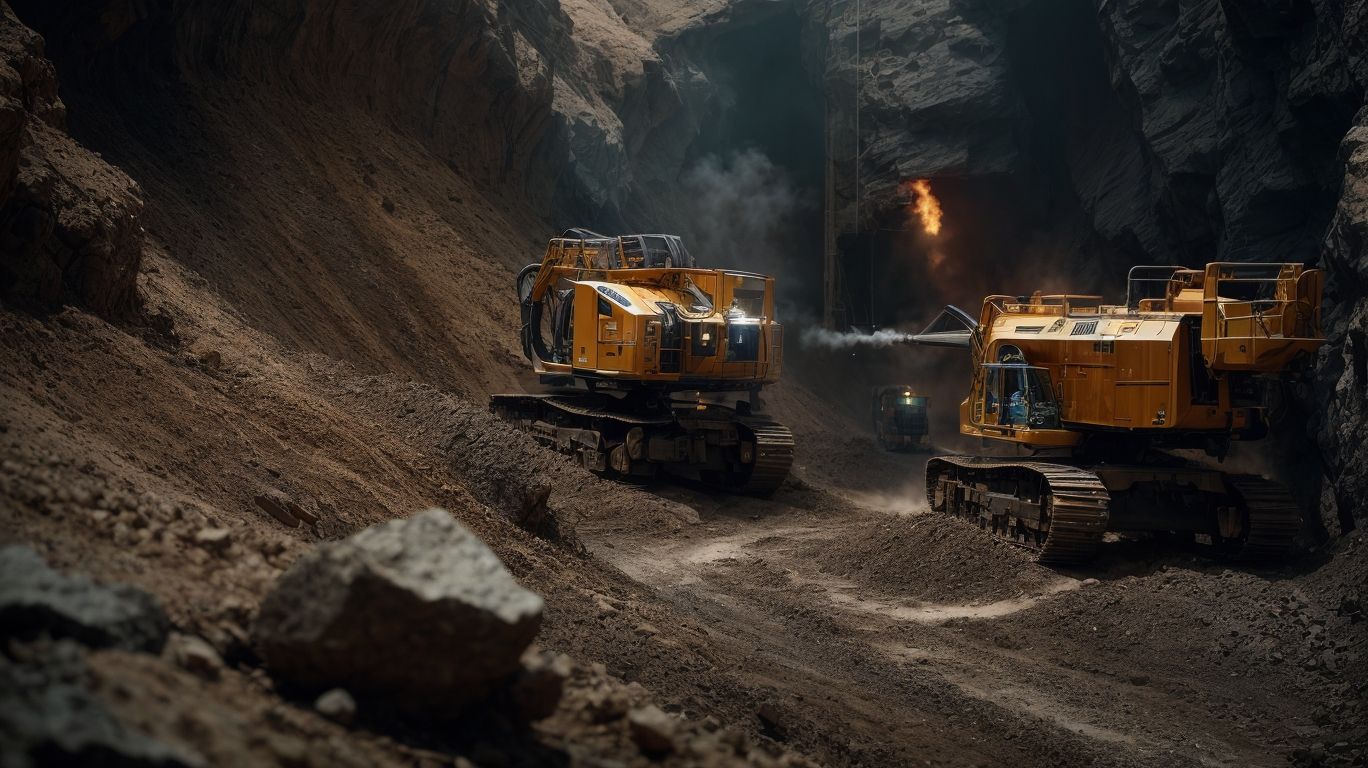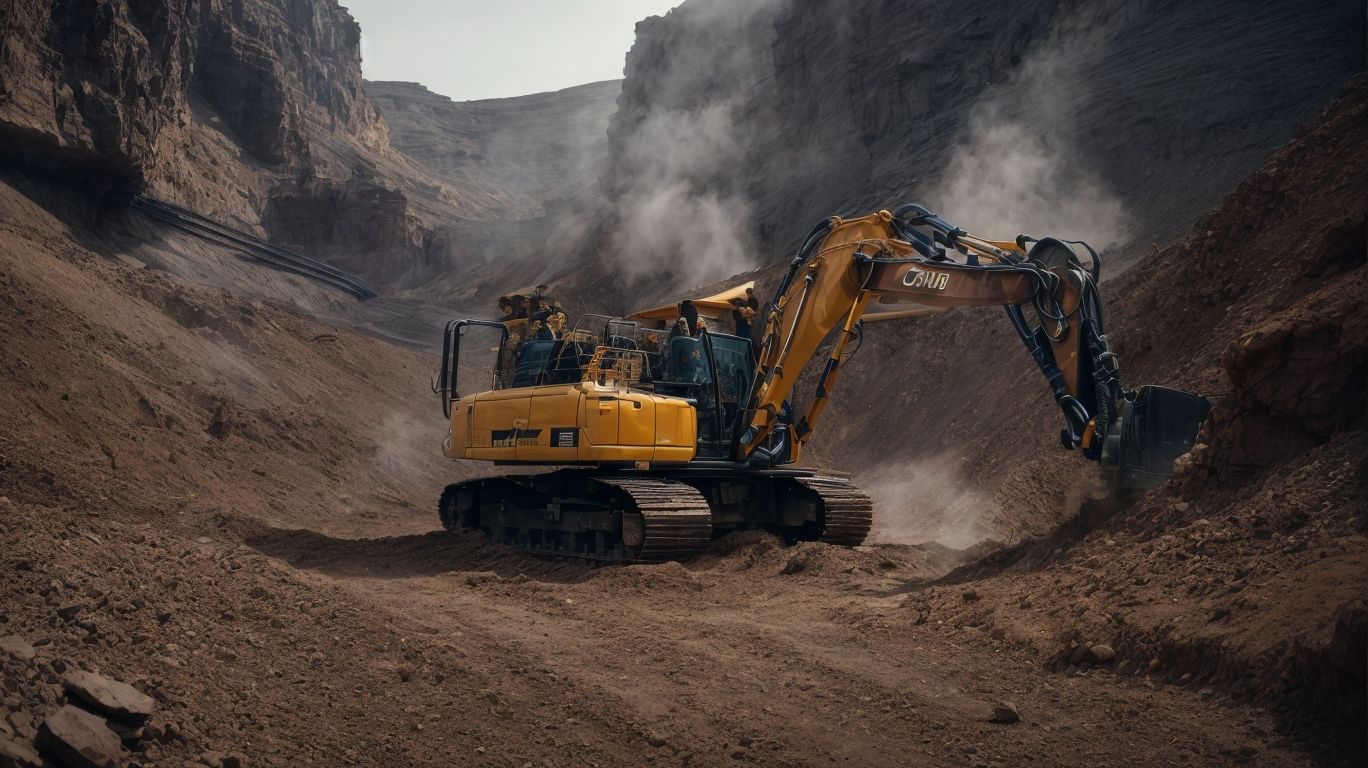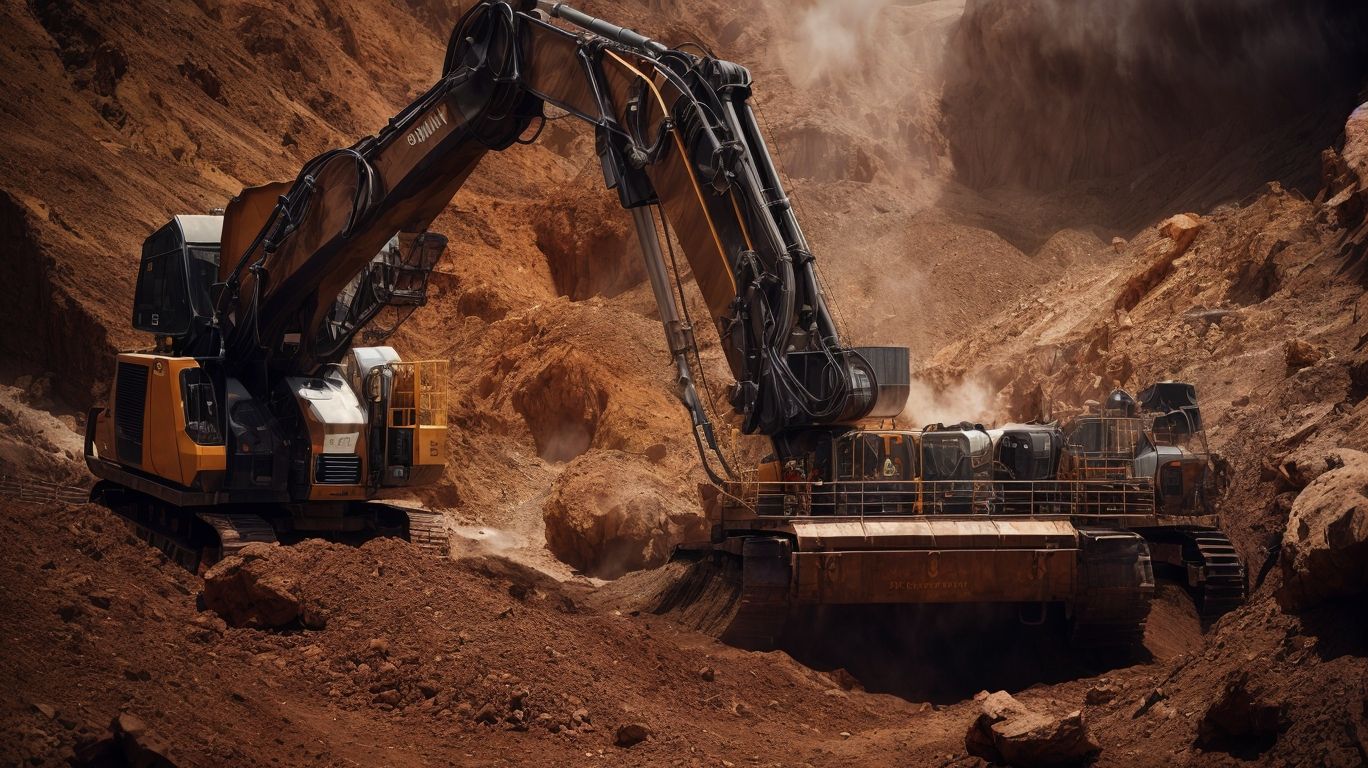Revolutionizing Mining: Embracing Robotics and Technological Progress
Robotics in mining refers to the use of advanced robotic technology in the mining industry to automate processes and tasks that were previously done manually. This cutting-edge technology has revolutionised the mining industry, bringing a new wave of efficiency, safety, and cost savings.
In mining, robotics is used for a variety of tasks, including exploration, drilling, transportation, and maintenance. These tasks are performed by robots designed specifically for the mining industry, equipped with advanced sensors, cameras, and other tools to carry out their designated tasks. There are different types of robotics used in mining, including autonomous vehicles, teleoperated robots, and remote-controlled drones. These robots can work in both underground and surface mining operations, making them versatile and adaptable to various mining environments.
The benefits of using robotics in mining are numerous, making it an attractive investment for mining companies. Some of the key benefits include:
- Increased Safety: By replacing human workers with robots, the risk of accidents and injuries in the mining industry is significantly reduced.
- Improved Efficiency: Robots can work around the clock, without breaks or exhaustion, leading to increased productivity and efficiency in mining operations.
- Cost Savings: By reducing the need for human labour, mining companies can save on labour costs, as well as reduce the costs associated with accidents and injuries.
- Access to Inaccessible Areas: Robots can be used to access and mine in areas that are unsafe or impossible for humans to reach, expanding the possibilities for mining operations.
However, there are also challenges that come with implementing robotics in mining, including:
- High Initial Investment: The initial cost of purchasing and implementing robotic technology in mining can be expensive, making it a barrier for some companies.
- Need for Skilled Operators: Operating and maintaining the robots requires a certain level of skill and specialised training, which can be a challenge for some mining companies.
- Maintenance and Repair Costs: As with any technology, there are costs associated with maintenance and repairs of robotic equipment, which can add up over time.
- Potential Job Displacement: The use of robots in mining may also result in job displacement for human workers, leading to potential job loss.
Despite these challenges, the future of robotics in mining looks promising. Some potential advancements and developments include:
- Increased Automation and Integration: The use of robotics in mining is expected to become more integrated and automated, leading to improved efficiency and productivity.
- Advancements in AI and Machine Learning: With advancements in artificial intelligence and machine learning, robots can become even more intelligent and adaptable to different mining environments.
- Expansion to Other Industries: The use of robotic technology in mining is likely to expand to other industries, such as construction and agriculture, where it can bring similar benefits.
- Continued Development and Improvement: As with any technology, the development and improvement of robotic technology in mining will continue, leading to more advanced and efficient robots in the future.
What Is Robotics In Mining?

Robotics in mining refers to the use of automated technology for mining operations. This includes autonomous vehicles for transportation, unmanned aerial drones for surveying, and robotic systems for drilling and excavation. These technologies improve efficiency, reduce human risk, and enable continuous operation in hazardous environments.
Pro-Tip: When exploring robotics in mining, examine the potential for autonomous systems to optimize resource extraction and enhance safety protocols.
How Is Robotics Used In Mining?

- Exploration: Robotic systems are used to explore and survey mining sites, identifying potential areas for extraction.
- Drilling: Automated drilling systems improve accuracy and efficiency, reducing human error and enhancing safety.
- Extraction: Robotics aid in extracting minerals from deep or dangerous areas, ensuring worker safety.
- Hauling: Autonomous hauling trucks and trains transport materials within mines, optimizing logistics.
What Are The Types Of Robotics Used In Mining?
- Autonomous Haulage Systems (AHS): Self-driving trucks and vehicles for transporting materials.
- Remote Operating Centres: Control centres enabling operators to control mining equipment from a remote location for safety and efficiency.
- Automated Drilling Systems: Self-directed drilling systems for increased precision and reduced human error.
- Robotic Sorting Systems: Automated systems for sorting and processing mined materials, enhancing efficiency.
What Are The Benefits Of Robotics In Mining?
Photo Credits: Miningresume.Com.Au by David Nguyen
As technology continues to advance, the mining industry is embracing the use of robotics in various operations. But what exactly are the benefits of incorporating robotics in mining? In this section, we will discuss the various advantages that come with the use of robotics in mining. From increased safety to improved efficiency, cost savings, and access to inaccessible areas, these benefits demonstrate the significant impact that robotics can have on the mining industry. Let’s explore each of these benefits in detail.
1. Increased Safety
Implement comprehensive safety protocols and training programmes for personnel working with robotics in mining. Utilise advanced sensor technologies and real-time monitoring to identify potential hazards and ensure a safe working environment. Regularly conduct risk assessments and safety audits to address any safety concerns and make necessary improvements. Invest in autonomous robotics to minimise the exposure of human workers to hazardous mining environments.
As the mining industry continues to embrace robotics, prioritising increased safety measures remains crucial for sustainable and efficient operations.
2. Improved Efficiency
Implement autonomous hauling and drilling systems to streamline operations.
Utilise robotics for predictive maintenance, reducing downtime and optimising equipment performance.
Incorporate real-time data analytics to enhance decision-making and resource allocation.
Integrate robotics for precision control in material handling and extraction processes.
3. Cost Savings
Implementing autonomous vehicles and robotic technologies reduces labour costs. Utilising predictive maintenance minimises downtime and repair expenses. Automation streamlines processes, lowering operational expenses. Consider integrating robotics incrementally to manage costs and maximise efficiency in mining operations.
4. Access to Inaccessible Areas
Remote Operation: Robotics enables the remote operation of machinery in hazardous or inaccessible areas, reducing human risk.
Exploration: Robots access uncharted or dangerous territories, gathering valuable data without endangering human workers.
Precision Tasks: Robots perform intricate tasks in confined spaces or environments with high temperatures, enhancing operational capabilities.
What Are The Challenges Of Implementing Robotics In Mining?

1. High Initial Investment
- Research and Planning: Thoroughly research the various types of robotics available for mining and evaluate their upfront costs.
- Cost-Benefit Analysis: Conduct a detailed cost-benefit analysis to understand the long-term financial implications of the investment.
- Exploring Financing Options: Explore different financing options such as leasing or partnerships to mitigate the immediate financial burden.
- Government Incentives: Look into potential government incentives or grants aimed at promoting technological advancements in mining.
2. Need For Skilled Operators
- Training: Mining companies provide comprehensive training programs to equip operators with the necessary skills in robotics operation and maintenance.
- Certification: Mining companies ensure that operators undergo certification processes to validate their competence in handling robotics equipment.
- Ongoing Education: Good mining employers will offer continuous learning opportunities to keep operators updated on the latest technological advancements and best practices in robotics in mining.
3. Maintenance and Repair Costs
Mining companies may be able to reduce labour costs, but will also need to factor in these costs:
- Regular Maintenance: Implement scheduled maintenance routines to prevent breakdowns and extend the lifespan of robotic equipment.
- Training Programs: Offer specialised training to equip staff with the skills to conduct minor repairs and troubleshoot common issues.
- Data-Driven Predictive Maintenance: Utilise data analytics to predict potential failures and plan preemptive repairs, reducing unexpected costs.
- 4. Potential Job Displacement
Potential job displacement in mining due to robotics is a significant concern. As automation increases, some manual roles may become redundant. To mitigate this, retraining programs, focusing on technical and supervisory skills, can aid in transitioning the workforce. New job opportunities in robotics maintenance and operation will help offset potential job losses.
What Is The Future Of Robotics In Mining?

As technology continues to advance, the mining industry is beginning to see the potential for increased efficiency and safety through the use of robotics. In this section, we will delve into the future of robotics in mining and the exciting developments that are on the horizon. From increased automation and integration to advancements in AI and machine learning, we will explore the various ways that robotics will revolutionise the mining industry. Additionally, we will discuss the potential for expansion to other industries and the continued development and improvement of robotic technology in mining.
1. Increased Automation and Integration
- Integration of Robotics: Mining operations increasingly integrate robotics, automating tasks like drilling, hauling, and transportation.
- Enhanced Automation: Robotics streamlines processes, such as ore extraction and sorting, boosting productivity and accuracy.
- Data Integration: Robotic systems are linked with data analytics, offering real-time insights for informed decision-making.
2. Advancements in AI and Machine Learning
Advancements in AI and machine learning have revolutionised mining. AI algorithms can analyse geological data to identify optimal drilling locations, while machine learning enables predictive maintenance for mining equipment, reducing downtime. Additionally, AI-powered robots can navigate hazardous environments autonomously, enhancing safety. As of 2021, nearly 50% of mining companies have implemented AI and machine learning technologies, leading to a 15% increase in productivity.
3. Continued Development and Improvement
- Research and Innovation: Engage in continuous research to identify areas for improvement and innovation in mining robotics technology.
- Testing and Prototyping: Develop and test new prototypes and technologies to enhance the performance and capabilities of robotics in mining.
- Collaboration and Partnerships: Collaborate with industry partners and academic institutions to leverage expertise and resources for advancement.
- Regulatory Compliance: Stay abreast of industry regulations and standards to ensure the responsible development and deployment of robotics in mining.
For sustained progress, prioritize ongoing research, collaboration, and compliance to drive the continued development and improvement of robotics in mining.
What is the current state of robotics innovation in the mining sector?
The mining sector is currently experiencing a dynamically evolving landscape with the adoption of robotics and automation technologies. This shift towards automation is being driven by leading companies such as BHP Billiton and Rio Tinto, who are using autonomous haulage trucks and drones in their operations to improve efficiency and safety.
What are some key disruptive innovations in the mining industry?
Some key disruptive innovations in the mining industry include the use of autonomous haulage trucks, drones for information gathering, and 3D laser scanner technology for mapping underground environments. These technologies are helping to reduce the need for human workers in hazardous environments, improving safety and efficiency.
How are companies using alternative datasets for strategic decision making?
Companies in the mining sector are using alternative datasets, such as patent data and social media buzz, to gain invaluable insights and stay on top of the latest news and trends in robotics and automation. This coherent data-driven approach empowers clients to make more informed strategic decisions.
How is the employment landscape in the mining industry expected to change with the adoption of robotics?
The adoption of robotics and automation in the mining industry is expected to bring profound shifts to the employment landscape. While some jobs may be lost, there is also potential for new employment opportunities, especially in non-routine tasks such as building new mines.
What is the latest news on robotics and automation in the mining sector?
The latest news in robotics and automation in the mining sector includes the development of an auto-rotating cavity scanner for underground mapping and the use of remote control and autonomous technologies in mining operations. Companies like BHP Billiton and Rio Tinto are leading the way in this strategic technology.

